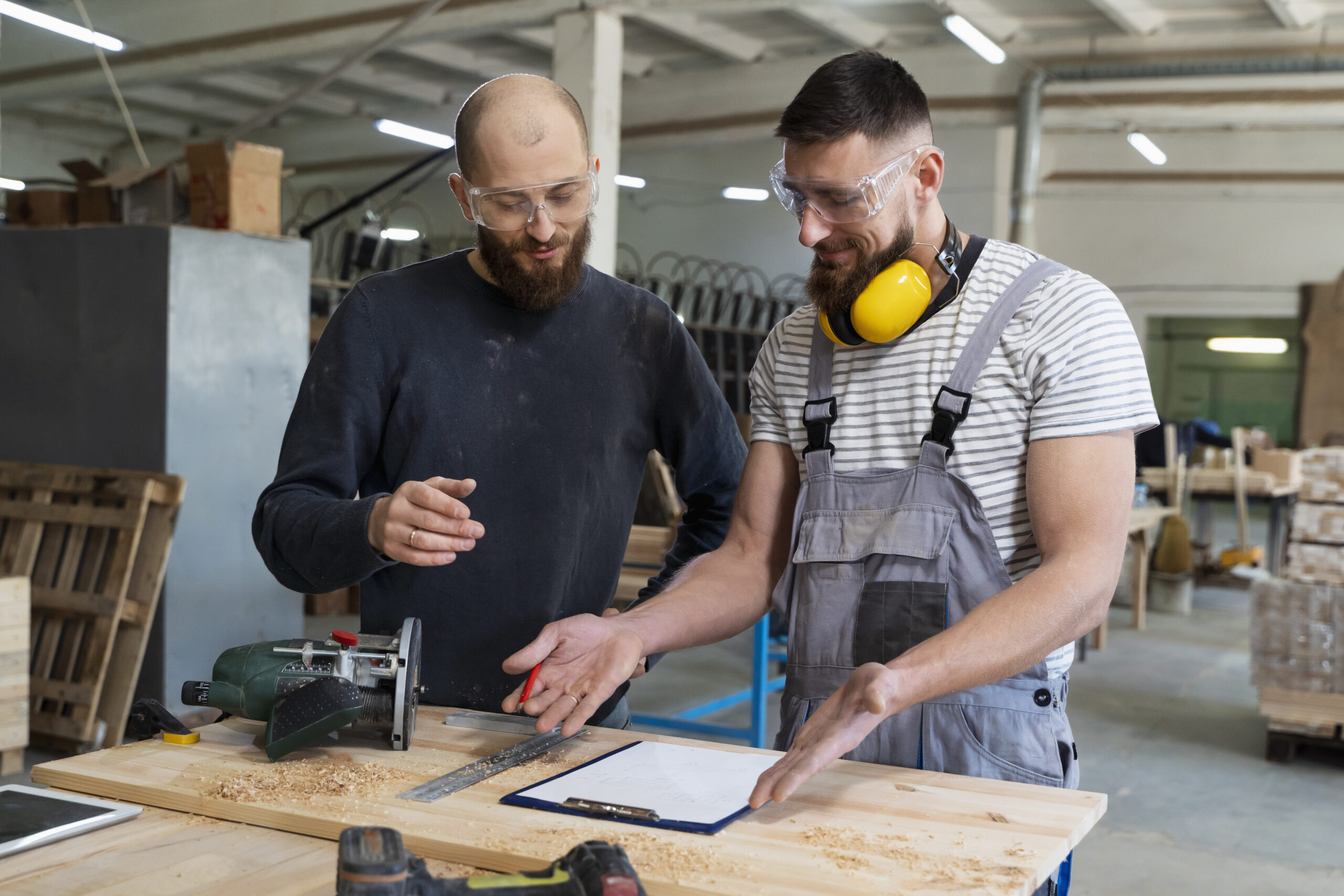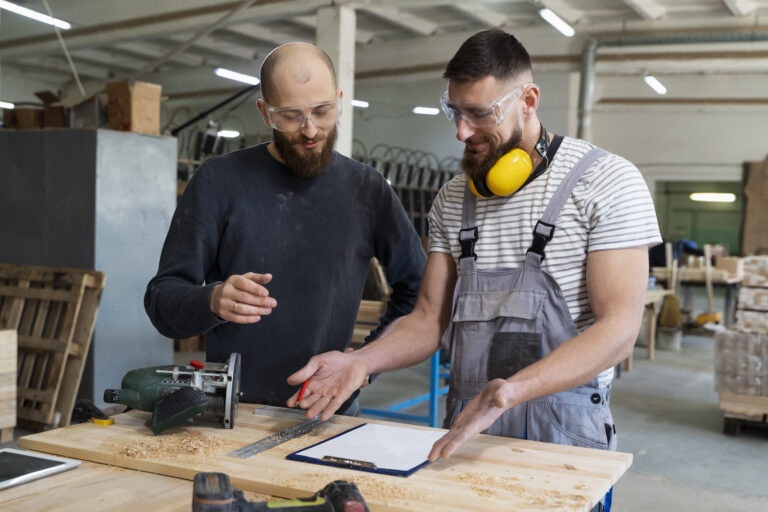In the world of skilled trades, carpentry is a craft that combines creativity, precision, and hands-on expertise.
Whether it’s building custom staircases, framing entire homes, or restoring historic wooden details, carpenters shape the spaces we live in. If you want to get into this rewarding field, a carpentry apprenticeship is one of the most direct and valuable ways to get started.
It’s not just about learning how to use a saw or follow blueprints. A carpentry apprenticeship sets you up for a long-term career in a high-demand industry where skilled hands are always in short supply.
What Is A Carpentry Apprenticeship?
A carpentry apprenticeship is a structured training program where you learn the trade both in the classroom and on real job sites.
It’s a hands-on path that lets you earn a paycheck while gaining the technical skills and experience to become a qualified carpenter.
Unlike college degrees that are often based on theory, an apprenticeship is about action. You’re working alongside professionals who have been in the trade for years. You’ll learn by doing, from the first cut of lumber to the final trim on a finished project.
Most programs are run by unions, technical schools, or construction companies. They’re designed to turn motivated learners into confident, job-ready tradespeople over the course of about 3-4 years.
Why Choose An Apprenticeship Over Traditional Education?
For a lot of people, college doesn’t feel right. Maybe it’s the cost, or maybe it’s the lack of practical experience. Apprenticeships give you a different route, one that skips the debt and starts your career immediately.
Instead of sitting in a lecture hall, you’re out in the field, building real things and developing in-demand skills. You’re not just reading about construction, you’re building it.
The best part? You get paid while you learn. As you progress through the program, your wage increases, and by the time you complete it, you’ll have the kind of experience employers are looking for.
What You’ll Learn As A Carpentry Apprentice
A good apprenticeship will teach you more than how to swing a hammer. The training is broad, hands-on, and practical, covering a wide range of techniques and safety protocols.
You’ll learn to:
- Read and interpret blueprints
- Work with construction materials like wood, drywall, and composite panels
- Measure and cut wood with hand and power tools
- Frame walls, install flooring, hang drywall, and fit kitchen cabinets
- Understand and apply building codes
- Navigate a job site with full awareness of safety procedures
- Comply with OSHA standards
This kind of experience will give you real confidence. By the time you finish your program, you’ll be able to do a wide range of tasks on your own, whether it’s a bathroom remodel or a large commercial project.
What You Need To Get Started
Starting a carpentry apprenticeship doesn’t require a long list of qualifications, but it does require commitment. Most programs require you to be at least 18 years old and have a high school diploma or equivalent.
You’ll also need:
- Basic math skills, especially geometry and measurements
- Good physical condition is required as the job often involves lifting, bending, and standing for hours
- A willingness to learn, show up on time, and follow directions
- In some cases, a valid driver's license and a clean drug test
Before you apply, it’s a good idea to familiarize yourself with basic tools and terminology. Volunteer on small projects, take a short course, or even try a construction simulation app like Tradefox to get a head start.
This kind of hands-on learning environment will help you build confidence before your first real job site experience.
Where To Find Apprenticeship Opportunities

Apprenticeships are offered by many organizations across the construction industry. You can find them through:
- Local trade unions like the United Brotherhood of Carpenters
- Technical colleges and community schools
- Government and state-run labor departments
- Construction companies with in-house training programs
- Online platforms and job boards for skilled trades
Once you’ve found a program, be prepared to fill out an application, take an aptitude test, and possibly an interview. Bringing any relevant work history, even from part-time construction jobs, can give you an edge.
Life As A Carpentry Apprentice
Once you’re accepted into a program, your days will be a mix of classroom training and on-site work. You might spend a few hours in a workshop learning how to build a frame, then head out to a job site to apply what you’ve learned in real time.
You’ll be supervised by journeymen carpenters who have years of experience and are responsible for mentoring apprentices. Their guidance is one of the most valuable parts of the journey. They’ll correct your mistakes, help you build your confidence, and show you the right way to get things done.
You’ll work hard. But you’ll see your skills improve week by week, which is one of the best parts of the process.
What Comes After The Apprenticeship?
Once you complete your apprenticeship, you’ll become a journeyman and the door will open to a wide range of opportunities. You can work on residential builds, commercial developments, or specialize in areas like cabinetry, restoration, or even green building techniques.
As your work experience grows, you can move into supervisory roles, become a subcontractor, or even start your own construction business.
The demand for skilled carpenters is strong, especially as older tradespeople retire and more projects require qualified hands. It’s not just a job, it’s a long-term career path with real earning potential and the chance to build a reputation in your local construction community.
Challenges To Be Ready For
Carpentry isn’t always easy. It can be physically demanding, and you’ll need to stay alert on busy construction sites. Learning the right techniques takes time, and there will be mistakes along the way.
Keeping up with safety protocols, especially HSE, is a big part of the job. Knowing how to protect yourself and your team is just as important as knowing how to use your tools.
But if you like problem solving and working with your hands, the challenges become part of the reward.
Conclusion
A carpentry apprenticeship is one of the best ways to get into the construction industry. You get practical skills, consistent income, and a foundation for a long-term career. You’re not just training for a job, you’re learning how to build things that last.
With tools in hand and guidance from experienced mentors, you’ll get the experience to succeed in the trade.
And if you’re just getting started, platforms like Tradefox can help you build your confidence through real-world simulations that mirror the conditions of the field.
In the end, carpentry is more than a trade, it’s a craft. And an apprenticeship is where that journey begins.



